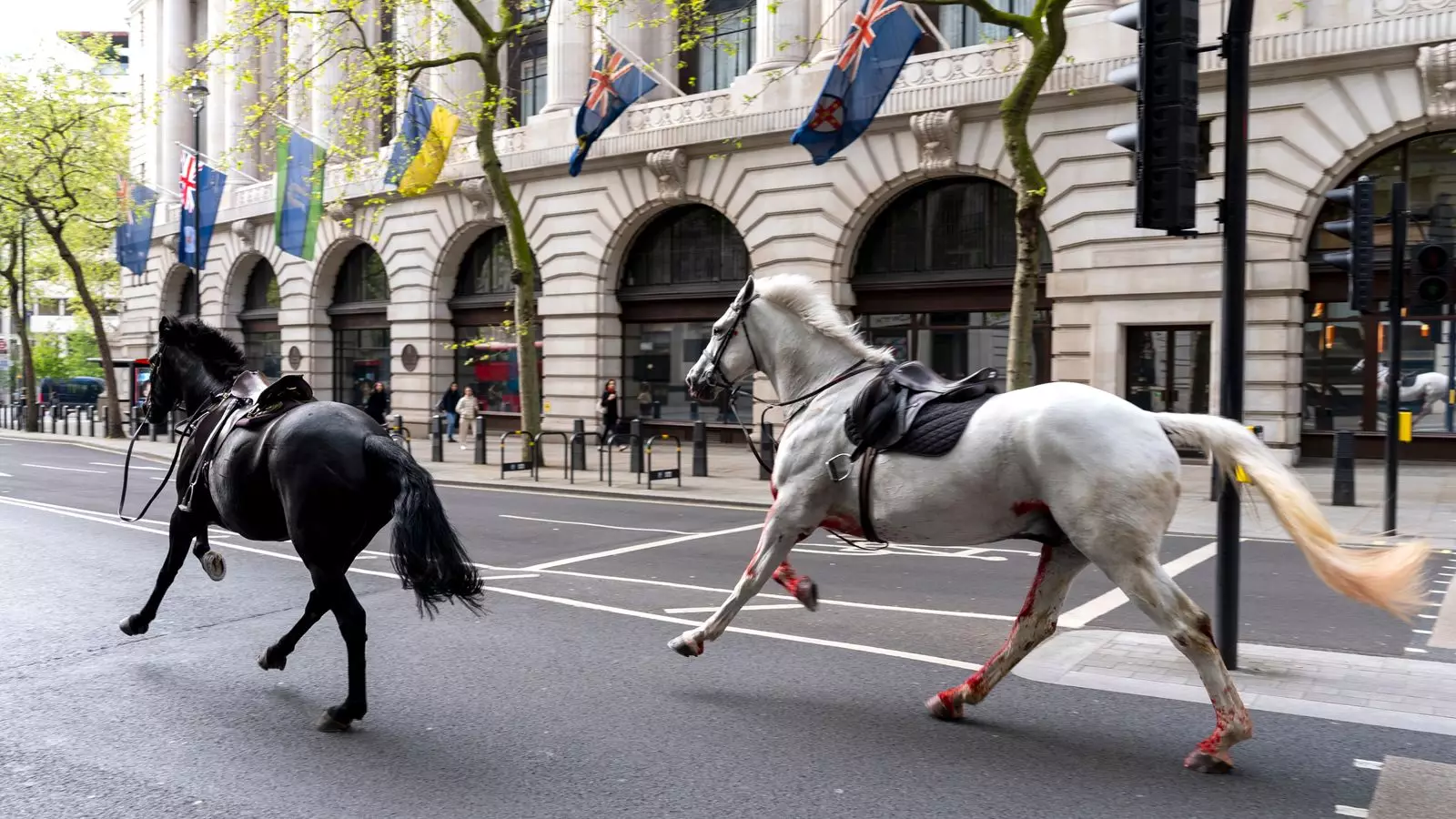Two military horses participating in a routine exercise in central London recently bolted and charged through the city, causing chaos and concern. The horses were spooked by builders dropping rubble from a height near them, leading to a dramatic situation that resulted in injuries to both soldiers and civilians. The incident, while rare, has raised questions about the safety and well-being of animals in such environments.
Following the incident, both horses underwent operations and are currently in a serious condition. One of the horses had to be taken to an equine hospital for treatment, while the rest are being closely monitored. The Defence Minister has confirmed that while two horses are in a relatively serious condition, all five animals have been reunited and are alive. The Army has assured that the horses receive the highest standards of care and will be returning to duty after recovery.
The public reaction to the incident was a mix of shock and concern, with witnesses describing the horses running through traffic at high speeds. One witness mentioned seeing the horses drenched in blood, which added to the dramatic nature of the situation. The fact that no serious injuries were reported among the public is a relief, but the psychological impact of witnessing such an event cannot be ignored.
Lessons Learned and Preventive Measures
The Army has emphasized that incidents like this are extremely rare, considering the daily exercises that involve around 150 horses in the city. The Commanding Officer of the Household Cavalry Mounted Regiment highlighted the importance of desensitizing horses to city noise and environmental factors to minimize such risks in the future. However, the question remains whether more can be done to prevent similar incidents from occurring again.
The recent incident involving military horses in central London has brought to light the challenges and risks faced by animals in urban environments. While the safety and well-being of the horses are a top priority for the Army, incidents like these raise questions about the adequacy of preventive measures and protocols in place. It is essential to learn from this experience and take necessary actions to ensure the protection of both animals and the public in the future.


Leave a Reply